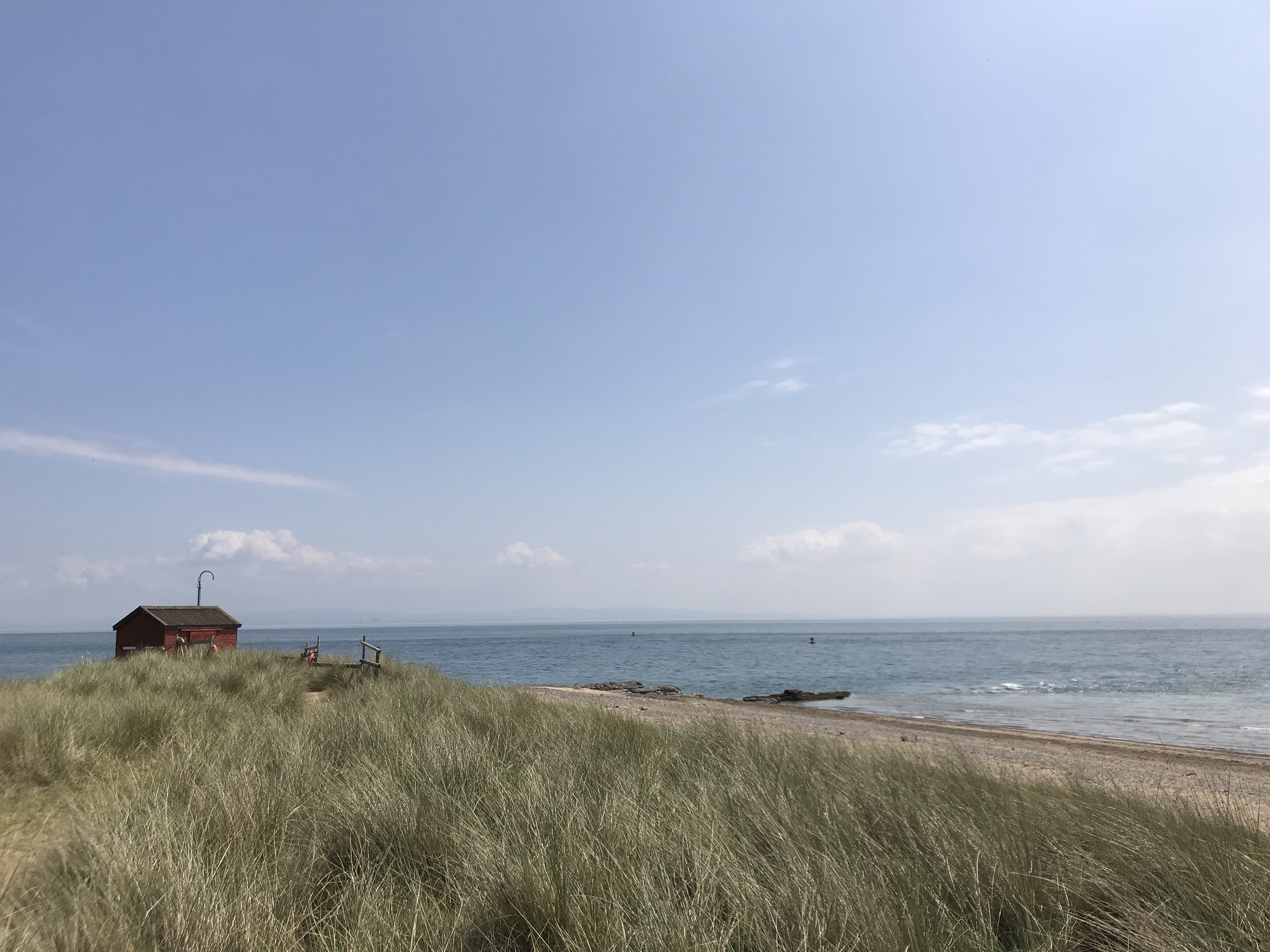
Watching the tides cause an hydraulic jump in the Irish Sea!
Looking at the picture above, taken in the South Walney Island Nature Reserve on our walk yesterday, what is the first thing you notice?
For me, it is not the cute little hide which is a perfect spot for seal and bird watching, for me it is — obviously! — what is going on with the waves! So much so that I spent the better part of an hour looking at the opposite direction of where all the seals were frolicking in the waves (except for one that came and played in the most fun part of the sea — more about that later).
Looking at the picture below, do you notice how different the different areas of water surface look? To the left of the wave breaker and going offshore from there, the surface is quite rough, with many waves of different wavelengths. But then going directly offshore from the wave breaker, the surface is smooth(er)! Followed by a rougher stripe, before it becomes smooth again, and a couple of well-defined wave crests reach the shore.
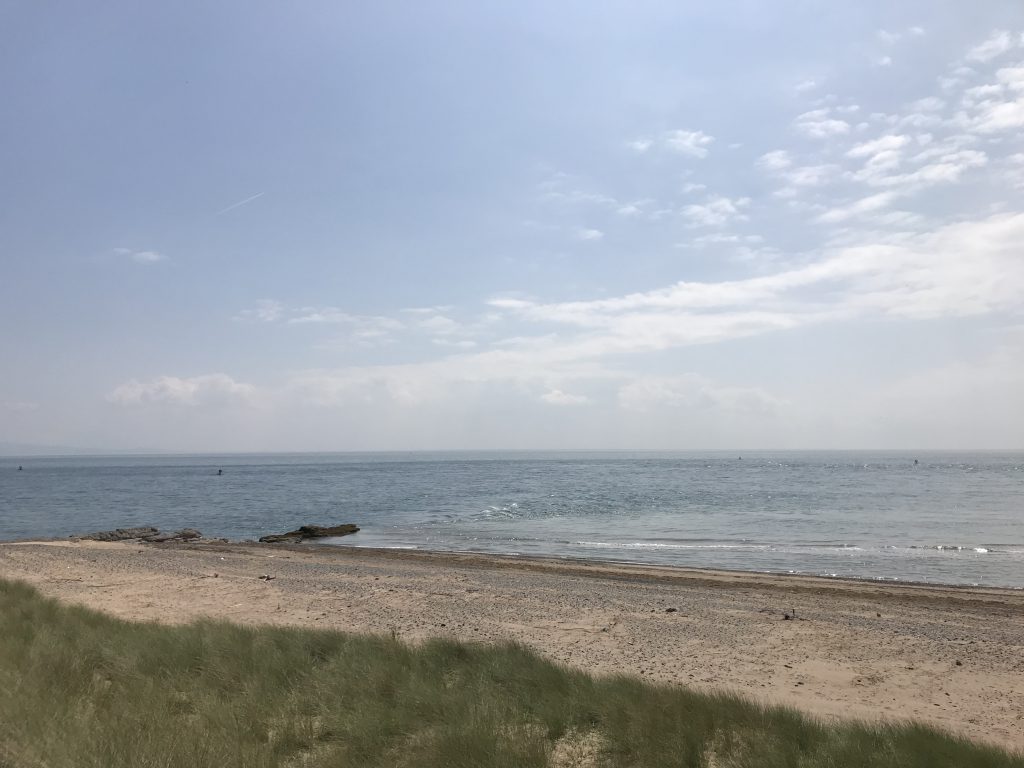
Zooming in on that area right off the wave breaker, you see that there are actually waves breaking towards the smoother area, away from the beach. Any idea what’s going on here, what might be causing those waves? (Hint: Even though there is a boat in the background, it is not some ship’s wake!)
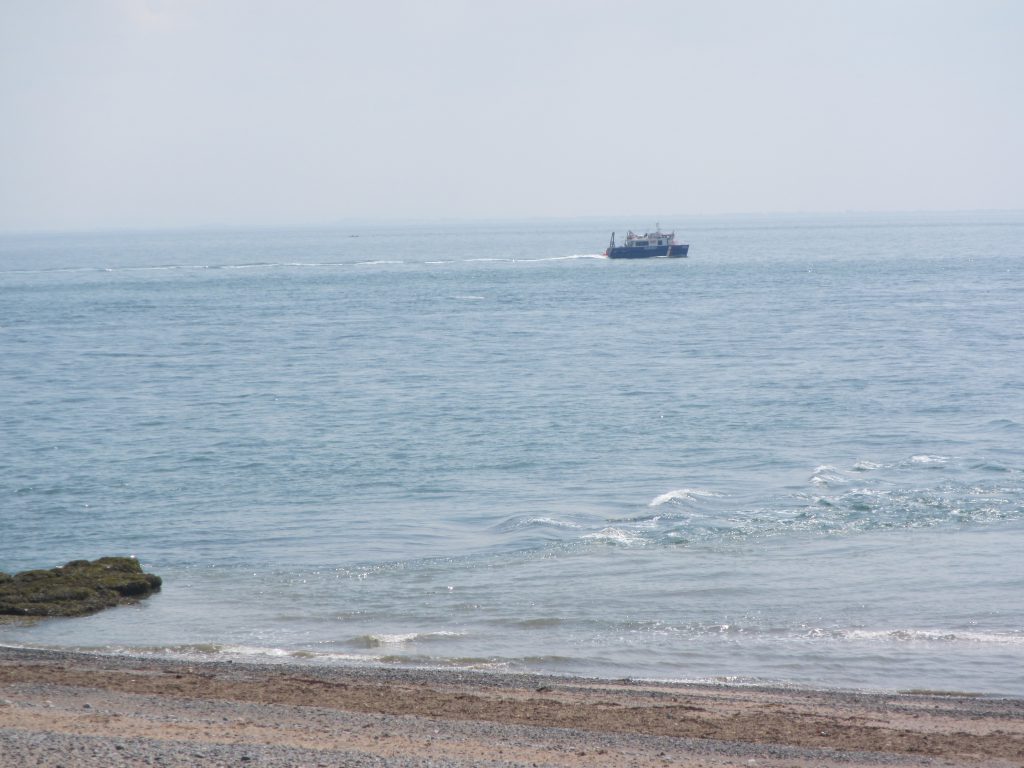
What we can observe here is actually a pretty cool phenomenon, called a hydraulic jump. Due to the tide going out, there is a current developing around the tip of Walney Island, going from left to right in the picture above. This current goes over the still-submerged part of the wave breaker. Since the cross section through which the water has to squeeze is all of a sudden a lot smaller than before and after, the water has to accelerate. And it accelerates so much that waves traveling on it are just flushed downstream and the surface looks smooth(er). Only when the cross section is wider and the water has slowed down, waves become visible again.
The spot where waves are exactly as fast as the current, but running against it, is called “hydraulic jump”. You can spot it right where the waves are breaking: They are trying to go back upstream but don’t manage to, so they stay locked in one place (see here for an analogy of people running up and down escalators to explain this phenomenon). You do see hydraulic jumps “in the wild” quite often, for example in rapids in rivers (and even more so in regulated rivers, very nice example here!). In case of the hydraulic jump right here, there was a seal playing in the current, clearly enjoying the wave action (and quite possibly also feeding on poor fish that suddenly get swept away with the current).
And indeed, 20 minutes later, the same spot looks like this: the surface roughness is a lot higher towards the right of the wave breaker, but all in all there are much fewer, and much smaller waves.
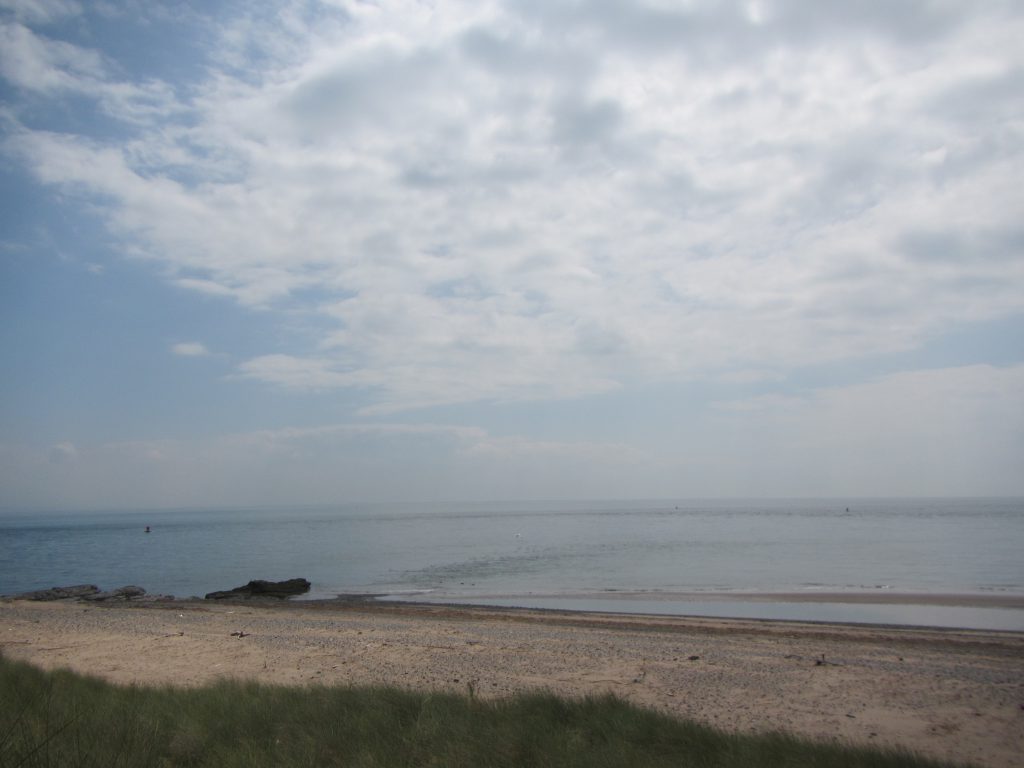
And another 20 minutes later, the formerly submerged wave breaker is revealed!
I find it always so cool when you see a wave field and just from what that wave field looks like, you can deduce what the ground underneath has to be like! In this case from seeing the hydraulic jump, you know that the wave breaker has to continue on offshore.
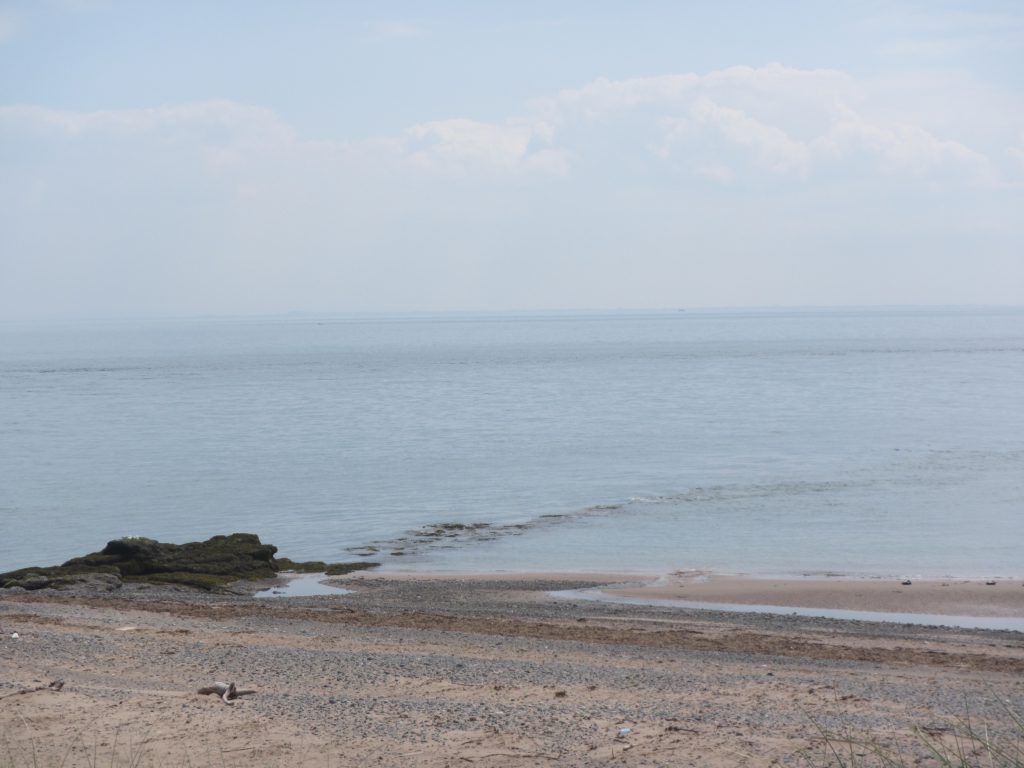
Wanna see the whole thing in action? Then here is a movie for you!
And the coolest thing is that this spectacle will repeat with every outgoing tide, so pretty much twice a day! And I am fairly confident that it will also happen halfway between, again, when the tide comes in and the current goes in the opposite direction. I would love to go back and check!